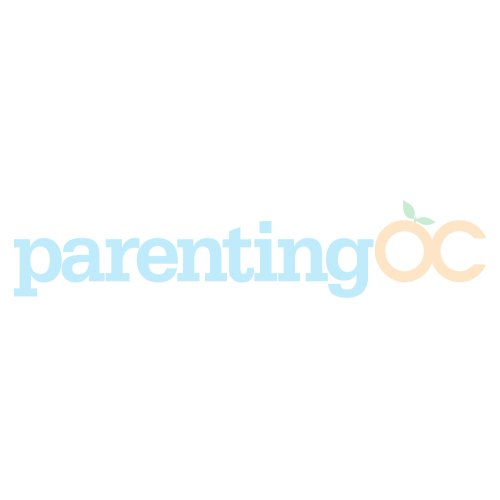High school admissions directors talk about what parents should look for in their child’s high school education.
High school is a crucial time in life for every teenager. They will meet friends they will likely carry throughout adulthood, find hobbies that become life-long passions and start preparing for college as well as their career.
As a parent, you want to ensure that you are sending your child to the right high school for them, and there is no one-size-fits-all solution. How can you tell which high school is the correct choice for your middle-schooler?
Key Points to Consider
As we all know, each child is completely different from his or her peers, which means a school that might work for one might not work for another. For example, if your child is a really great baseball player, you want to send him to a school that cultivates his talent and interests.
Admissions Director Angell Laurent-May from the Prep Academy at Fairmont Schools says, “When choosing a high school, finding one that aligns with a child’s unique interests, learning style and needs is essential. Each student thrives in a different environment, so it’s important to consider what will best support their academic growth, social development and personal passions.”
There is a lot more involved than just academics, but a solid support system and balance is also critical when it comes to creating an environment your child will succeed in.
Amber Munos, public information officer at the Fullerton School District says, “When families are considering high school options for their students, it’s important to look for a school that takes a whole-child approach to education. This means that a high school not only offers sound academic programs and course options but also works with intentionality in creating a supportive school environment that fosters social-emotional growth. Hallmarks of this include ample access to school counselors, mental health and wellness resources, and a healthy variety of clubs, sports, academic teams and extracurricular activities.”
Are Statistics Important?
Yes, buzzwords like graduation rates, class size and test scores aren’t things you should overlook, but you shouldn’t obsessively look into them either. For example, test scores are only a brief snapshot into a child’s academic career — it doesn’t always paint the complete picture of what the school or your child is capable of.
Chris Harrington, vice president of Admission and Marketing at JSerra Catholic High School says, “Graduation rates, class size and test scores can give you a lot of information about a school. They provide a great starting point for discerning a school that might be a good fit for your child and family. Generally, I would say that looking for a school that is academically strong is wise, simply because it will help provide students with the best education possible while also keeping professional options open.”
There is also something to be said with the correlation between academics and safety. As Amy Choi-Won, Ph.D. from the North OC Regional Occupational Program (ROP) says, “If a school has good stats, such as graduation rates and test scores, the school environment tends to be more academic and safer. There are fewer issues with classroom management and other distractions. If I had a choice, I would send my child to a school with a high graduation rate and test scores, but the stats don’t have to be the highest.”
Catering to a Child’s Needs
This is where your research skills come into play as a parent. First, key into what your child excels in. If it’s academics, you want to focus in on schools that place a high emphasis on academics. If your child is incredibly social, perhaps a school that has a lot of different clubs or social events would be a better fit.
Variety is key for kids that are really trying to find themselves during this time in life. Munos says, “An excellent school recognizes that each student is unique and requires different support to succeed. Offering a variety of pathways, such as honors and advanced placement, supportive special education, English learner programs and career-focused tracks, helps cater to individual student needs. Equally important is access to a wide range of extracurricular activities. From athletic to academic teams, coding clubs to performing arts, and so much more, students’ need for opportunities to explore their passions outside the classroom cannot be understated.”
Don’t underestimate the power of social media as well. Checking out a school’s social media activity can give you a real glimpse into areas the school excels in.
Choi-Won says, “Looking at the school’s social media sites and checking out different groups from the school, you can get a sense of which activities/sports teams are good at school. You can attend an open house at the school to see if your children can see themselves there. You can start earlier, like in sixth or seventh grade, by attending high school open houses. You can also talk to parents with older children and learn more about different schools and their programs.”
How to Prepare
Middle-schoolers that are at grade-level for subjects like reading and math typically have an easier time adjusting to high school. However, if your child is a little behind the curve, it doesn’t mean they won’t have a successful high school journey either.
Harrington says, “Encourage them to choose a school that will help prepare them for college or their career. Being at grade level in terms of reading, writing and math skills is essential. If a student is below grade level, making sure that they get the support that they need to be successful is essential.”
Being a support system for your child and encouraging good habits is also a big deal during this time. Laurent-May says, “One way parents can help prepare their child for high school is by focusing on developing good study habits. Encouraging your child to build effective routines early is critical. Help them with time management, setting priorities and staying organized. As high school demands increase, these foundational skills will help them manage their workload and stay on top of assignments with greater ease.”
What to Prioritize
Things like clubs, support systems and extracurricular activities are very important for high school, but let’s face it, academics mean a lot too. This means choosing a school that develops things like problem-solving skills and critical thinking.
Munos says, “In addition to academic excellence, a child’s education should prioritize critical thinking, emotional intelligence and adaptability. Today’s students need to be prepared for a rapidly evolving world and economy, and schools should equip them with the ability to solve complex problems, collaborate with others, and navigate social and emotional challenges.”
Good habits are also critical to develop with your child so they are fully prepared for the challenges of high school. Harrington says, “The most important part of a child’s education are the values that they appropriate and the habits that they build. A student’s success and ultimately, their happiness is based far more on the habits they develop than how good they are at playing a sport or taking a test. Finding a school with exceptional leadership and great mentors is the key to helping students achieve to their potential.”
By Jessie Dax-Setkus










Leave a Reply